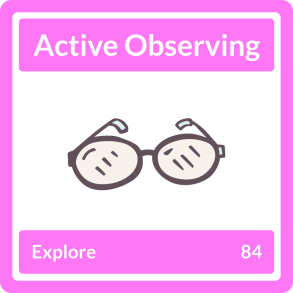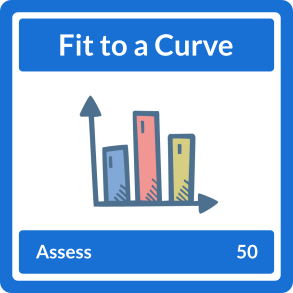A lot of trainers, learning designers and other learning professionals ask me about making their learning experiences more engaging and activity-led. I created the Transform Deck as a tool to help trainers and other creators of learning to get inspiration. It’s designed to help create learning that focuses on the learner and gets them doing things that engage but also embed the learning.
You can learn more about the deck itself here but here I’d like to share some useful insights about some of the specific ways the deck suggests you can create learning experiences. In particular, I want to look at the six suits, each of which embodies a different kind of learning. Even if you never use the deck, I think you can benefit from thinking of learning this way.
To do it, I’ll use an example ‘card’ from each of the suits, showing how it could inspire a range of activities, taking the learning in different directions. Each card is intended to be quite flexible, suggesting a category of activities rather than a specific activity.
Get learners to ‘Explore’ using ‘Active Observing’
If there’s any kind of sequence to the six suits across the Transform Deck’s Core Deck and Deck 2, the Explore suit might come first. Cards in the suit suggest activities where learners explore ideas in an open-ended way. This is often a great first step in learning — get the learners involved, and get some material in front of them that they can go on to work with more later.

Activities based around the card ‘Active Observing’ see learners exploring something by watching in an active, engaged way. Looking for particular things. If your topic was presentation skills, you might ask learners to watch some presentations, with a checklist of good and bad behaviours. How many can they find? What’s the balance? This could extend to many types of communication and interaction skillsets.
This could be taken in many directions. Learners could create the checklist themselves. Each learner could use the same list, or some could look for different things, comparing notes later. And the activity could combine with others. Combined with ‘Quest’, learners might race through the internet looking to fill their checklist like a bingo card. Combined with ‘Change the Lens’, different checklists could be coloured with biases, subjectivity and assumptions, with interesting outcomes on what learners notice.
Get learners to ‘Assess’ how cases ‘Fit to a Curve’
Another early step for learners is to make assessments and judgements. This is the core of the ‘Assess’ suit, which places clever structures around asking learners to rank, match, critique and assert value. With it, you can push learners into thought processes that surface their values and valuations.

‘Fit to a Curve’ Activities use the instrument of the standard ‘bell’ curve and say: if this kind of standard distribution applies here, where does each case fit in the curve? Is this one right on the common average? Is this one a ‘long tail’ outlier? This can provide a helpful visual and structural framework to work with and get learners to think about how performance is distributed.
If looking at performance or talent management, learners could place real individuals or personas on the curve. Of course, they may disagree that the standard bell curve applies here — which is an interesting direction to take the discussion in. They may disagree with each other and this might lead to interesting debates.
Combinations here could include ‘Big Menu’ — maybe learners select from a huge menu of persuasion techniques and place them for effectiveness. Or ‘Everyday Example’ — maybe learners come up with examples from everyday life and fit them to the curve, which could work well with something like stress, charting individual causes of stress for the degree of impact.
Get learners to ‘Arrange’ their thoughts using ‘Do It By Algorithm’
The ‘Arrange’ suit’s activities ask learners to work with structures and frameworks, creating an ordered arrangement or model from a messy reality, or fitting cases into a framework. This can be a great tool for understanding complex situations, or for exploring content that involves an existing model or process.

A ‘Do It By Algorithm’ approach can be a useful way to break down assumptions and force learners to explore what they know and solidify it. The idea is for learners to create an algorithm that could be followed to complete a task. An introductory exercise could be to do this for a cup of tea, with the more complex follow-up asking for an algorithm for a more complex task, like calming down somebody who’s lost their temper, or carrying out an audit.
In both cases, the algorithm can be tested — push learners by finding ways that their algorithm falls down or needs correction and ask them to improve it. This is surprisingly easy to do, even with something as simple as making a cup of tea and learners may never come up with a perfect algorithm for a more complex task but that’s okay: the journey is the point, not the product.
Combinations here might include ‘Turn it into a Model’, where learners take the learning from the algorithm and produce a simpler model of another kind, such as a simplified process or four-box model. Or ‘Contrasting Rules’, where you could change the starting assumptions and see how this changes the algorithm.
Get Learners to ‘Create’ with ‘Create a Game’
The ‘Create’ suit engages learners’ creative muscles. On the simpler end, this may just be brainstorms and storytelling. But your learners don’t need to be expert game designers to create a game, especially if it’s a simple one based on Monopoly, Snakes and Ladders, or Catan.

What creating a game will force people to do is examine their knowledge of the area: what should be reflected in the game? What’s most important? What lessons would you want somebody playing this game to learn? How could a game reflect real-life processes and problems in this area?
If the topic was motivation, learners could use the baseline of Snakes and Ladders, with Snakes as demotivating events and Ladders as Motivating ones. They could add in new game ideas: suggest they give players different options beyond just rolling the dice, to reflect different manager approaches to motivation, or that they give players options to change the board.
If they create a fun, playable game, great. But even if they don’t, again, the process is where the learning happens. A debrief could examine where the games succeed and where they fail. Combine this with ‘Customise an Avatar’ to explore how different types of people would navigate the game, or ‘Challenge and Resources’ to supply them with lots of game components and inspiration, and see what they do with them.
Get Learners to ‘Solve’ the challenges of ‘Caretaking’
With the activities in the ‘Solve’ suit, learners solve puzzles, play games and have to try to reach specific outcomes given rules and constraints. This allows for a lot of structure in the design of the learning.

A great example is ‘Caretaking’, a set of activities inspired by the Tamagotchi craze of the 1990s, where players took care of a digital pet, making sure they fed and cared for it into adulthood. It’s not hard to see how this could be developed into something workplace-related, with characters replacing pets and learners having to guide and care for their character, through a sea of work-based obstacles and challenges.
It doesn’t have to be digital — this can be achieved with storytelling, or with cards or other media. You can lean into computer-game ideas, using ‘lives’ and ‘energy’, or make it into a more storytelling approach, describing at each stage how their charge fares.
This could combine with the previously-mentioned ‘Do it By Algorithm’, with learners having to submit a ‘program’ of orders up-front. Or with various ways of giving choices or showing progress, such as ‘Amplify/Reduce’ (which could see learners having ‘dials’ they turn up or down for their charge). Or ‘Divide Your Points’ (which could see them having a limited number of points to assign to priorities and having to make tough choices).
Get Learners to ‘Apply’ their learning using ‘Explain it to a Novice’
‘Apply’, as the name suggests, is all about learners applying their knowledge in practical ways or in real-life or simulated situations. Obviously, these sorts of activities can be vital in making sure learning is not just theoretical and transfers to the real world.

A simple but powerful way to check learning and see if it transfers is for the facilitator (or someone else) to take the role of a novice and have the learners explain key concepts to them, questioning and misunderstanding and objecting as a real novice would. It can be surprisingly tough to put things in the most basic of terms and forces learners to examine and order what they know.
This can be used with almost any topic if it can be explained. It could be combined with a ‘Roleplay’ to focus on a specific novice or type of novice. Or with ‘You Be the Judge’ to have learners themselves comment on whether an explanation was ‘novice’ enough.
These are just six of the ninety cards available
I hope this article has inspired some ideas about how the six Transform suits — Explore, Assess, Arrange, Create, Solve and Apply — can give direction to your learning design. Or maybe even about how these specific activities could work for you.
But if not, there are eighty-four other cards in the six suits, across the Transform Deck’s Core Set and Deck 2. You can learn more about the decks here, or pick up copies here.

